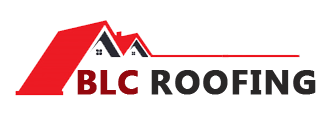When it comes to the intricate world of roofing, understanding the myriad of terms and jargon can be overwhelming. However, we, at BLC Roofing, believe that a well-informed client is an empowered one. Hence, we present a comprehensive guide to help you navigate through common roof terminology, ensuring you can make informed decisions about your roofing needs.
Contents
Roofing Components and Structure
1. Roof Deck
The roof deck is the foundational layer of a roof, usually made of wood or plywood, providing the base on which all other roofing components are installed.
2. Underlayment
This is a water-resistant layer installed directly onto the roof deck. It acts as a secondary barrier, protecting the deck from water and moisture, thus preventing any potential damage.
3. Roof Covering
The outermost layer of the roof, the roof covering, provides the primary protection against environmental elements. It can be composed of shingles, tiles, or metal, depending on the architectural preference and functionality required.
4. Flashing
Flashing is a crucial component, typically made of metal, designed to direct water away from critical areas of the roof, such as valleys and joints, preventing water infiltration and subsequent damage.
Types of Roofs
5. Gable Roof
Characterized by its triangular shape, a gable roof is one of the most common and versatile roof types, offering excellent water drainage and ample space for the attic.
6. Hip Roof
With slopes on all four sides, a hip roof is more stable than a gable roof, making it an ideal choice for regions with high winds or hurricanes.
7. Mansard Roof
A mansard roof, also known as a French roof, features two slopes on each side, with the lower slope being steeper. This design allows for maximized living space in the attic area.
Roofing Materials
8. Asphalt Shingles
Asphalt shingles are a popular choice due to their cost-effectiveness and ease of installation. They are available in a variety of colors and styles to suit different architectural designs.
9. Metal Roofing
Metal roofing is renowned for its durability and longevity. It is resistant to fire, rot, and insects, making it a sustainable choice for those seeking minimal maintenance.
10. Slate Roofing
Slate roofing offers a distinctive appearance and high durability. It is fire-resistant and recyclable, making it an eco-friendly option.
Roof Maintenance and Repair
Regular maintenance is paramount in extending the life of your roof. It is advisable to conduct Akron, OH roof inspections periodically to identify and address any issues promptly. A professional roof repair service in Akron, OH, such as BLC Roofing, can assess the condition of your roof and recommend appropriate interventions, whether it be repair or replacement.
Roof Replacement and Installation
When the time comes for a new roof, considering the right roofing services in Akron, OH is crucial. The process of roof installation in Akron, OH involves removing the old roof, inspecting the roof deck, installing a new underlayment, and finally, placing the new roof covering. BLC Roofing ensures a seamless and efficient roof replacement service in Akron, OH, prioritizing quality and client satisfaction.
Conclusion
Understanding the various components, types, and materials associated with roofing is essential for making informed decisions regarding roof maintenance, repair, and replacement. By being knowledgeable about these terms, you can effectively communicate your needs and preferences with roofing companies from Akron, OH, ensuring the longevity and optimal performance of your roof. Whether you are seeking maintenance, repair, or a complete overhaul, BLC Roofing is committed to delivering excellence and ensuring your roofing experience is hassle-free and fulfilling.
